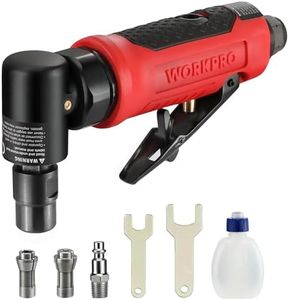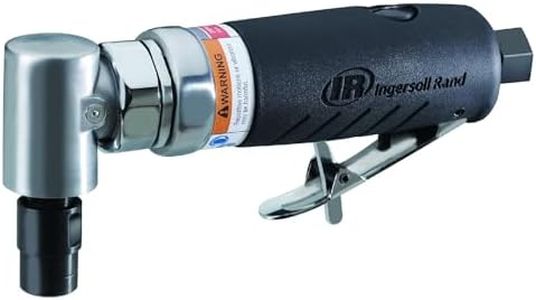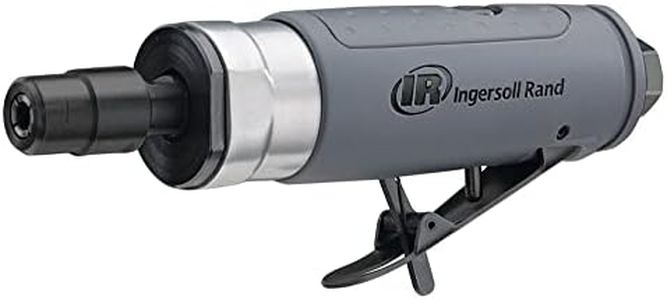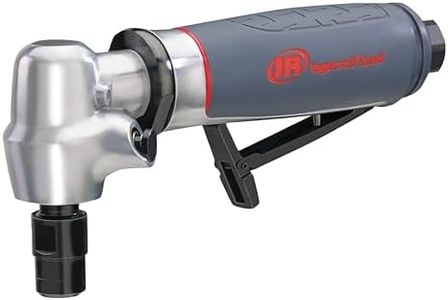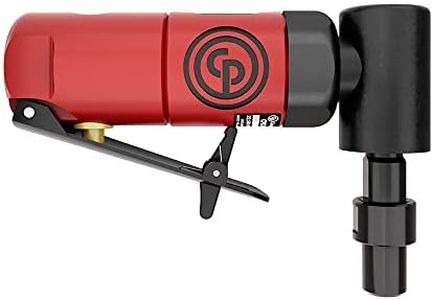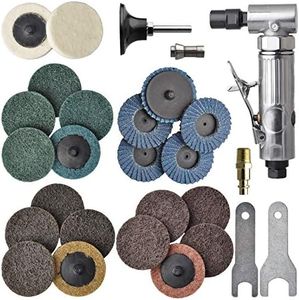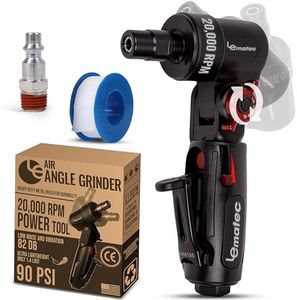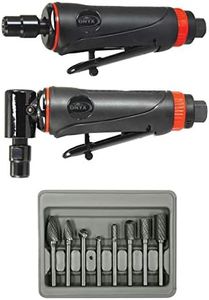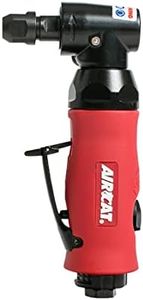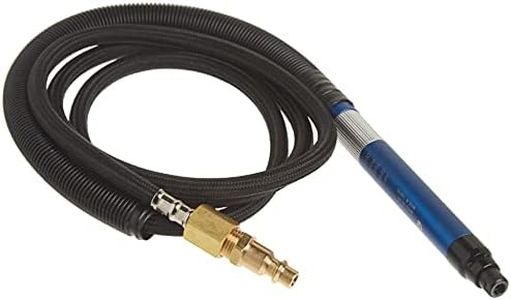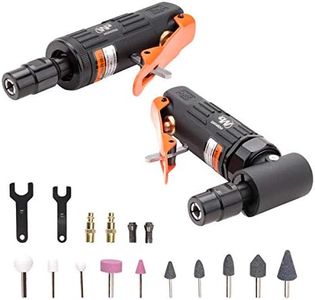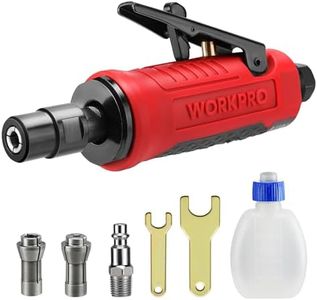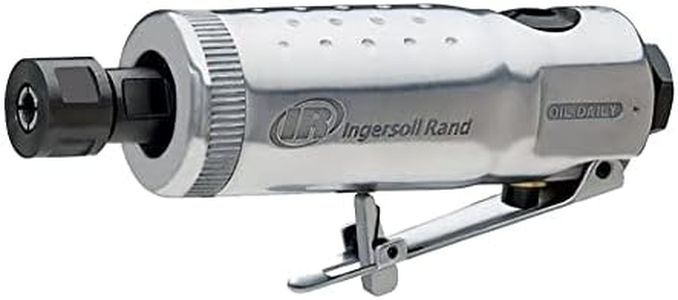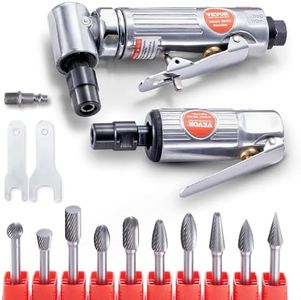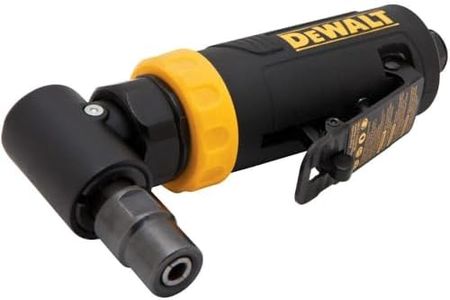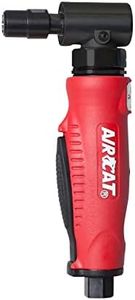We Use CookiesWe use cookies to enhance the security, performance,
functionality and for analytical and promotional activities. By continuing to browse this site you
are agreeing to our privacy policy
10 Best Air Die Grinders 2025 in the United States
How do we rank products for you?
Our technology thoroughly searches through the online shopping world, reviewing hundreds of sites. We then process and analyze this information, updating in real-time to bring you the latest top-rated products. This way, you always get the best and most current options available.

Buying Guide for the Best Air Die Grinders
Air die grinders are versatile tools used for grinding, sanding, honing, polishing, or machining material. They are commonly used in metalworking, woodworking, and automotive applications. When choosing an air die grinder, it's important to consider the specific tasks you'll be performing and the materials you'll be working with. Understanding the key specifications will help you select the best tool for your needs.RPM (Revolutions Per Minute)RPM indicates how fast the grinder's spindle rotates. Higher RPMs are suitable for lighter, more precise tasks, while lower RPMs are better for heavy-duty grinding. For delicate work, choose a grinder with higher RPMs (20,000-25,000 RPM). For general-purpose use, a mid-range RPM (15,000-20,000 RPM) is ideal. For heavy-duty tasks, look for lower RPMs (10,000-15,000 RPM). Match the RPM to the type of work you plan to do.
Air ConsumptionAir consumption measures how much air the grinder uses, typically in cubic feet per minute (CFM). This is important because it determines the size of the air compressor you'll need. Lower air consumption (3-4 CFM) is suitable for light tasks and smaller compressors. Medium air consumption (4-6 CFM) is good for general use. Higher air consumption (6+ CFM) is necessary for continuous, heavy-duty work. Ensure your air compressor can supply the required CFM for the grinder.
Collet SizeThe collet size determines the diameter of the shank that the grinder can hold. Common sizes are 1/4 inch and 1/8 inch. A 1/4 inch collet is more versatile and can handle a wider range of attachments, making it suitable for general use. A 1/8 inch collet is better for precision work and smaller attachments. Choose the collet size based on the type of attachments you plan to use.
WeightThe weight of the grinder affects how easy it is to handle and control. Lighter grinders (1-2 pounds) are easier to maneuver and reduce fatigue during extended use, making them ideal for detailed work. Medium-weight grinders (2-3 pounds) offer a balance between control and durability. Heavier grinders (3+ pounds) are more robust and suitable for heavy-duty tasks. Consider the duration and type of work to determine the best weight for you.
Noise LevelNoise level is measured in decibels (dB) and indicates how loud the grinder is during operation. Lower noise levels (70-80 dB) are more comfortable for prolonged use and reduce the risk of hearing damage. Medium noise levels (80-90 dB) are common and generally acceptable with hearing protection. Higher noise levels (90+ dB) can be disruptive and require more robust hearing protection. Choose a grinder with a noise level that you can comfortably manage, especially if you'll be using it frequently.
ErgonomicsErgonomics refers to how comfortable and easy the grinder is to use. Features like a comfortable grip, easy-to-reach controls, and vibration reduction can make a big difference in user comfort and precision. Look for grinders with ergonomic designs if you plan to use the tool for extended periods or for detailed work. Test the tool if possible to ensure it feels comfortable in your hand.
Most Popular Categories Right Now
